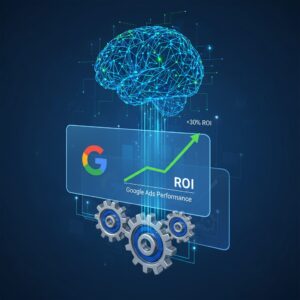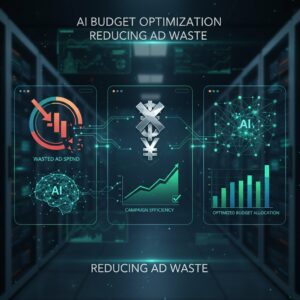
I’ve spent 20 years helping small businesses grow. I’ve watched companies fail because they ignored their competition. I’ve also seen businesses thrive when they understood what their competitors were doing right and wrong.
Today, AI changes everything about competitive analysis. You no longer need a team of analysts or expensive consulting firms. You can now use AI tools to understand your competitors better than they understand themselves.
Let me show you how to do this practically.
Understanding What Your Competitors Are Really Doing
Most business owners think they know their competition. They visit competitor websites once or twice. They check prices occasionally. They assume they understand the market.
This approach doesn’t work anymore.
AI tools can monitor your competitors continuously. They track pricing changes every day. They analyze customer reviews across multiple platforms. They identify patterns in competitor marketing strategies.
I helped a local restaurant owner use AI to track three competing restaurants. The AI tool monitored their social media posts, customer reviews, menu changes, and promotional offers. Within two weeks, we discovered that one competitor was losing customers because of slow service during lunch hours.
My client adjusted staffing during lunch. He promoted faster service in his marketing. He captured 30 percent of the competitor’s lunch business within a month.
You can do similar analysis for your business. Start by identifying your top three competitors. Use AI tools to monitor their online presence. Look for gaps in their service. Find complaints in their customer reviews.
AI makes this process automatic. You receive alerts when competitors change prices. You get notifications when customer sentiment shifts. You see opportunities before your competitors even know they exist.
Using AI to Decode Customer Behavior Patterns
Your competitors have customers. Those customers leave digital footprints everywhere. They write reviews. They post on social media. They ask questions on forums. They search for solutions online.
AI can analyze these digital footprints at scale. It identifies what customers actually want versus what businesses think they want. This gap represents your opportunity.
I worked with a home cleaning service struggling to compete with larger franchises. We used AI to analyze thousands of customer reviews for competing services. The AI identified a pattern. Customers repeatedly complained about different cleaners arriving each visit. They wanted consistency.
The large franchises couldn’t provide this because of their business model. My client guaranteed the same cleaner for every visit. He marketed this guarantee heavily. His business grew 200 percent in six months.
AI tools can process information that would take humans months to analyze. They find patterns across thousands of data points. They predict which features customers value most. They show you exactly where to focus your resources.
Start by collecting data about your competitor’s customers. Use AI sentiment analysis tools to review their feedback. Look for repeated complaints or unmet needs. These represent market gaps you can fill.
AI also predicts future customer behavior. It analyzes search trends. It identifies emerging needs before they become obvious. This gives you time to adapt while your competitors remain unaware.
Turning Competitive Intelligence Into Customer Acquisition
Information without action is worthless. I’ve seen business owners collect massive amounts of competitor data and do nothing with it. They analyze everything but implement nothing.
The real power comes from turning insights into specific actions that win customers.
AI helps you create targeted campaigns based on competitor weaknesses. It identifies which customers are most likely to switch. It suggests specific messages that resonate with dissatisfied competitor customers. It even optimizes the timing of your outreach.
I recently helped a software company compete against a market leader. We used AI to identify customers complaining about the leader’s poor customer support. The AI tool found 1,200 potential customers expressing frustration online.
We created a targeted campaign highlighting our superior support. The AI optimized our ad copy, timing, and placement. We converted 180 of those frustrated customers in three months. Our customer acquisition cost was 60 percent lower than traditional marketing.
You can implement similar strategies regardless of your business size. AI tools are now affordable for small businesses. Many cost less than hiring a single employee.
Here’s how to start:
Use AI to identify your competitor’s weakest points. These might be poor customer service, limited product options, high prices, or slow delivery.
Create specific offers that address these weaknesses. If competitors have poor support, emphasize your responsive service. If they’re expensive, highlight your value. If they’re slow, promote your speed.
Deploy AI powered advertising that targets competitor customers. Modern AI tools can identify people searching for alternatives. They can find social media users complaining about competitors. They can target ads to people visiting competitor websites.
Test different messages and let AI optimize performance. AI adjusts campaigns in real time based on response rates. It identifies which messages work best for different customer segments. It maximizes your return on every marketing dollar.
Track results continuously. AI dashboards show exactly which strategies win customers. They calculate your cost per acquisition. They identify your most profitable customer sources.
I’ve implemented these strategies across dozens of industries. Retail stores use them to compete with online giants. Service businesses use them to win customers from established competitors. B2B companies use them to challenge market leaders.
The businesses that win aren’t always the biggest or most established. They’re the ones that understand their competitors better and act on that understanding faster.
AI gives small businesses the same analytical power that was once available only to large corporations. You can now compete with companies ten times your size because you have the same intelligence tools.
Your competitors probably aren’t using these tools yet. Most businesses still rely on gut feeling and occasional market checks. This gives you a significant advantage if you act now.
Start small. Pick one competitor to analyze deeply. Use AI tools to understand their strengths and weaknesses. Identify one opportunity to differentiate your business. Create one targeted campaign to win their dissatisfied customers.
Measure the results. Refine your approach. Expand to additional competitors as you gain confidence.
The business landscape changes constantly. AI helps you stay ahead of those changes. It alerts you to new competitors entering your market. It identifies shifts in customer preferences before they become obvious. It suggests adjustments to your strategy based on real market data.
Winning more customers isn’t about working harder. It’s about working smarter. AI gives you the intelligence advantage you need to outmaneuver competitors and capture market share.
The question isn’t whether to use AI for competitive analysis. The question is how quickly you can implement it before your competitors do.
Please check our Business Tips https://thoughts.business/category/business-tips/
Please check our partner site – Why Invest? https://whyinvest.info/





